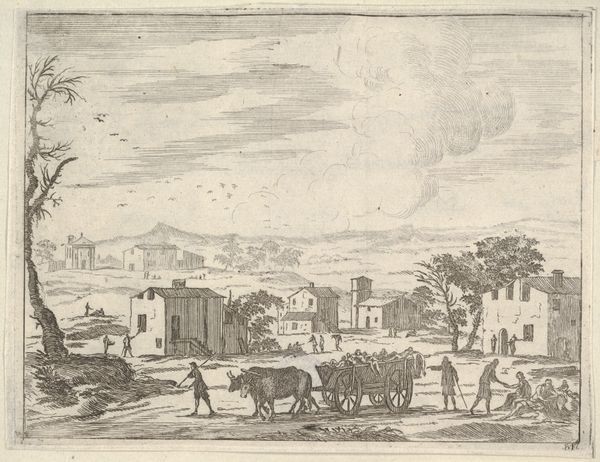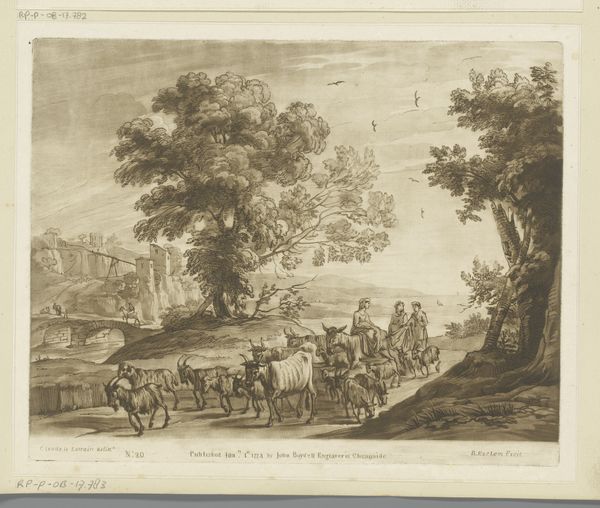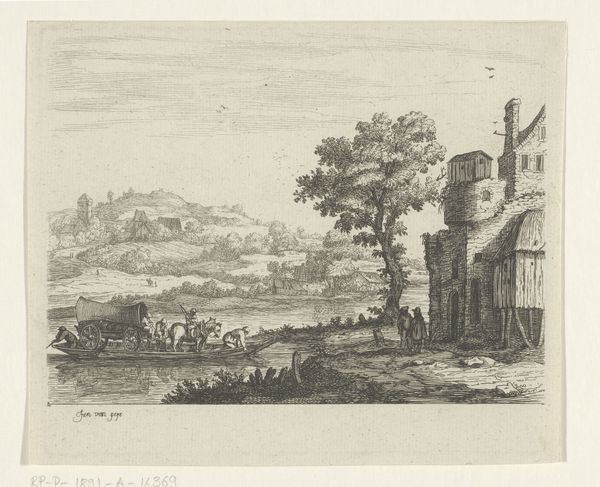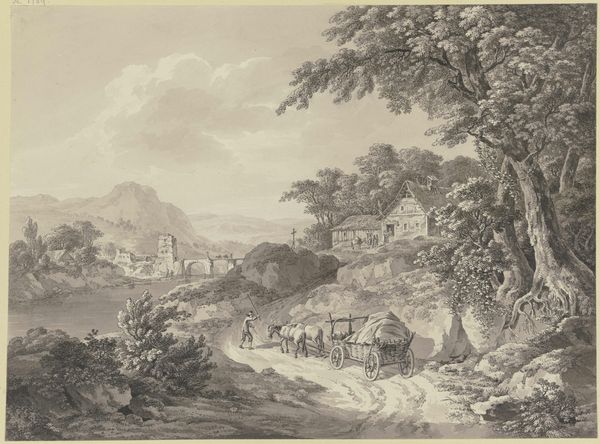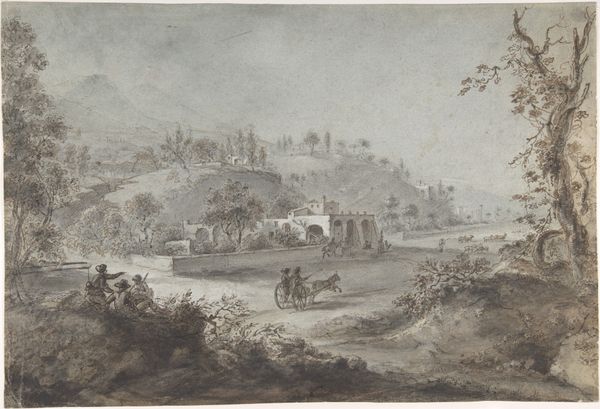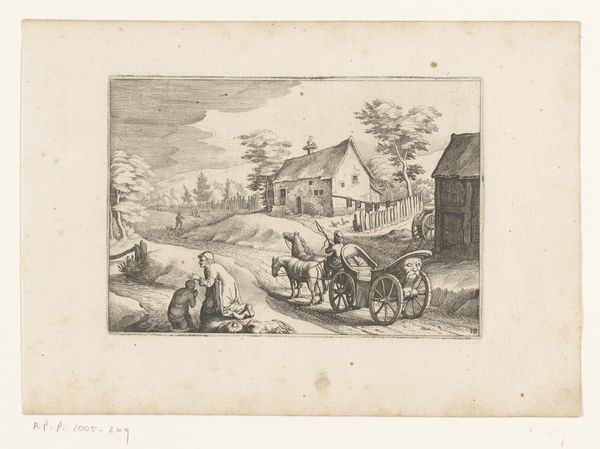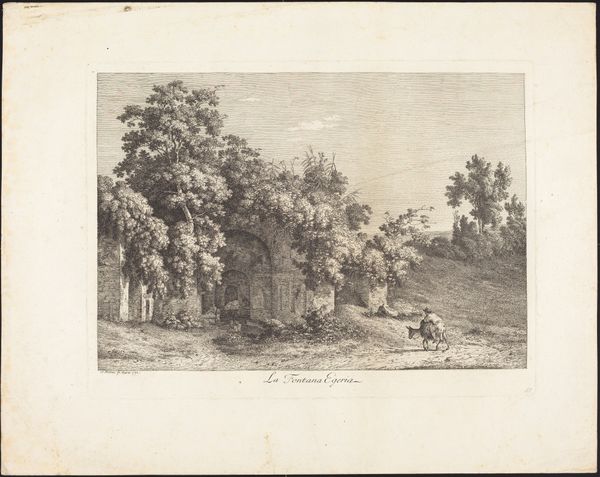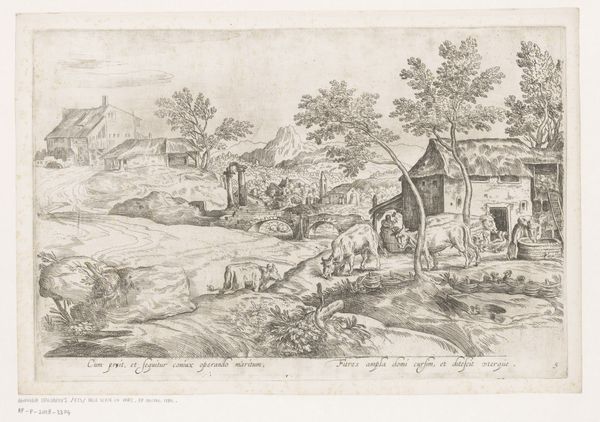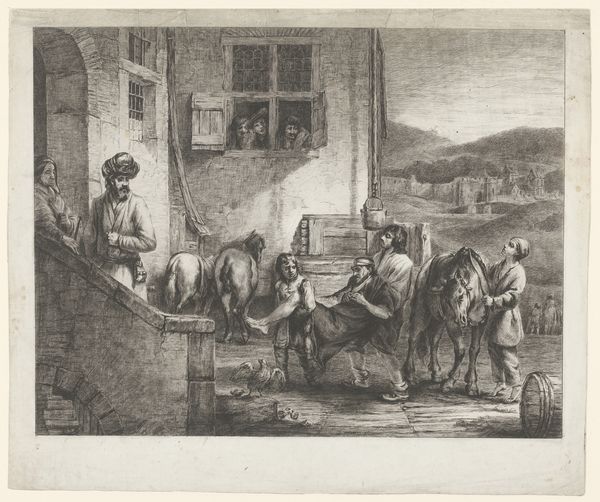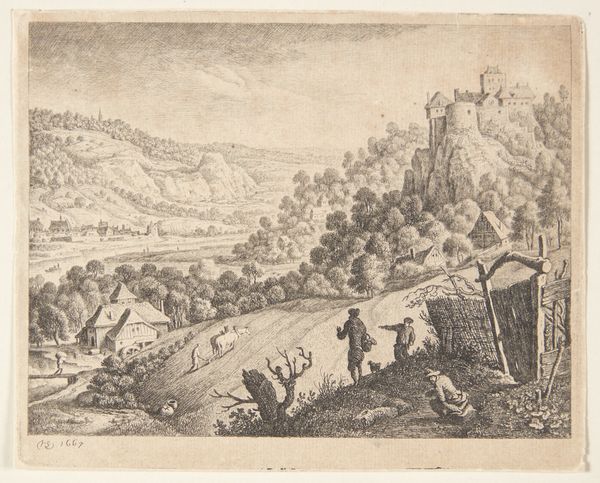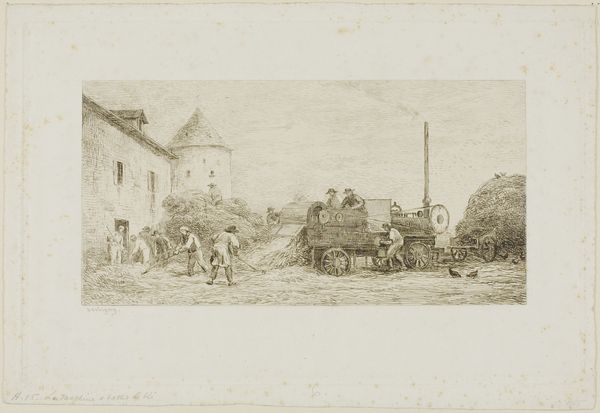
drawing, print, etching, pencil
#
drawing
#
neoclassicism
# print
#
etching
#
landscape
#
house
#
figuration
#
pencil
#
history-painting
Dimensions: Sheet: 9 3/4 × 14 7/16 in. (24.8 × 36.6 cm) Plate: 8 5/8 × 13 3/16 in. (21.9 × 33.5 cm)
Copyright: Public Domain
Editor: This is Jean Jacques de Boissieu's "Garigliano Passage (Italy)," etched in 1793. There’s something serene, yet subtly grand about the landscape. The detail is incredible for an etching, and I'm curious about the narrative it might be conveying. What jumps out at you when you look at this piece? Curator: I notice immediately how De Boissieu uses this seemingly idyllic scene to participate in a larger, politically charged discussion of landscape. Look at the date, 1793. This isn’t just a pretty picture of Italy; it's produced during the French Revolution. Consider how artists were using landscape to evoke ideas of nationhood and cultural identity. The Garigliano River, of course, carries its own historical weight as a border. Does Boissieu present a unified vision or highlight social stratification? Editor: So, the act of depicting this scene is almost a political act in itself? The figures on the boat seem almost… incidental? Curator: Precisely! The figures *are* incidental, and that is what is *intended.* Think about who is commissioning and consuming landscape prints at this time. It is usually the Bourgeoisie or Aristocracy removed from any immediate and actual relationship to that particular region. They seek to gain cultural capitol from "knowing" a certain place via artistic reproductions of it, without knowing it physically. What kind of visual and rhetorical choices do you see him making to further or disrupt that project? Is he simply trying to convey that idea, or does he present more ambiguity? Editor: I see what you mean. There’s definitely a tension – the meticulous detail suggests an almost scientific observation, yet the overall composition romanticizes the scene, even as a battle might have been fought over that land a century earlier. Curator: Exactly. By presenting a generalized, rather peaceful image of a historically contentious area, De Boissieu engages in the contemporary artistic discourse of nation and empire. This approach reminds us that landscapes, even seemingly innocent ones, can carry significant social and political meaning. It shows how art reflects and shapes our understanding of the world around us. Editor: I never thought of landscapes this way before – thank you! It’s fascinating to consider the social and historical forces embedded within a seemingly simple etching.
Comments
No comments
Be the first to comment and join the conversation on the ultimate creative platform.

